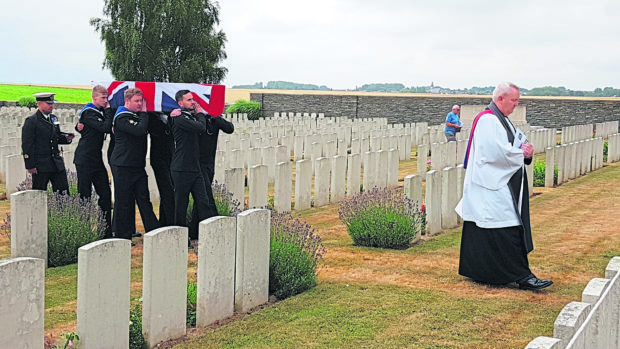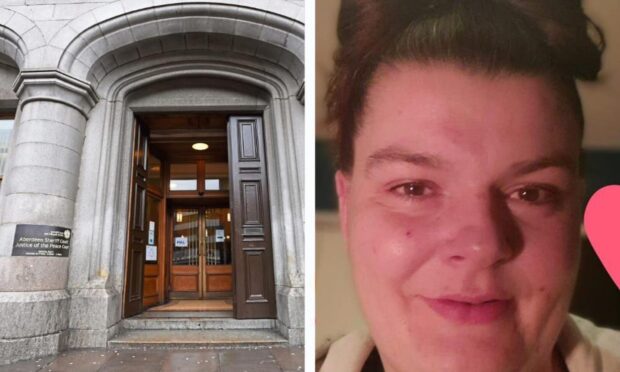An Aberdeen sailor killed during the First World War has received a full military burial service in France more than a century after his death.
Able Seaman James Robertson, who was born in Raeburn Place in the Granite City, was just 27 when he perished in April, 1917, during the capture of Gavrelle.
However, it was not until 2016 that his remains and uniform shoulder titles were discovered outside Arras in northern France and handed over to the MoD’s Joint Casualty and Compassionate Centre.
Even then, the latter organisation had to carry out DNA tests to confirm the findings and JCCC researchers narrowed down the list of missing sailors to two men, both 5ft 2in in height.
Eventually, they were able to verify the remains were those of Mr Robertson, who was drafted to the Anson Battalion from the Royal Naval Division in January, 1917.
Yesterday morning, he was laid to rest in a poignant ceremony at the Commonwealth Games War Graves Commission Orchard Dump Cemetery in France.
The service, which was attended by his nephew, Frank Treasurer, 81, also highlighted the scale of the losses as the hostilities raged on.
The Battle of Arras was fought from April 9 to May 16 and marked the beginning of the spring offensive on the Western Front.
But, although the Allies made some progress amid the protracted conflict, they suffered a grievous toll of 159,000 casualties, including 46,000 Scots.
Many of these were from the north and north-east of the country, including Mr Robertson, who was born in 1891 to John Mckay Robertson and Helen Cameron.
Their son joined the RND at the beginning of the war and served with the Hood Battalion, subsequently being involved in fighting at Gallipoli and Northern France, where he sustained an injury.
It was only after recovering from his wounds that he was called up to the Anson Battalion.
And, sadly, that posting took him to Arras, where he lay for almost 100 years.










